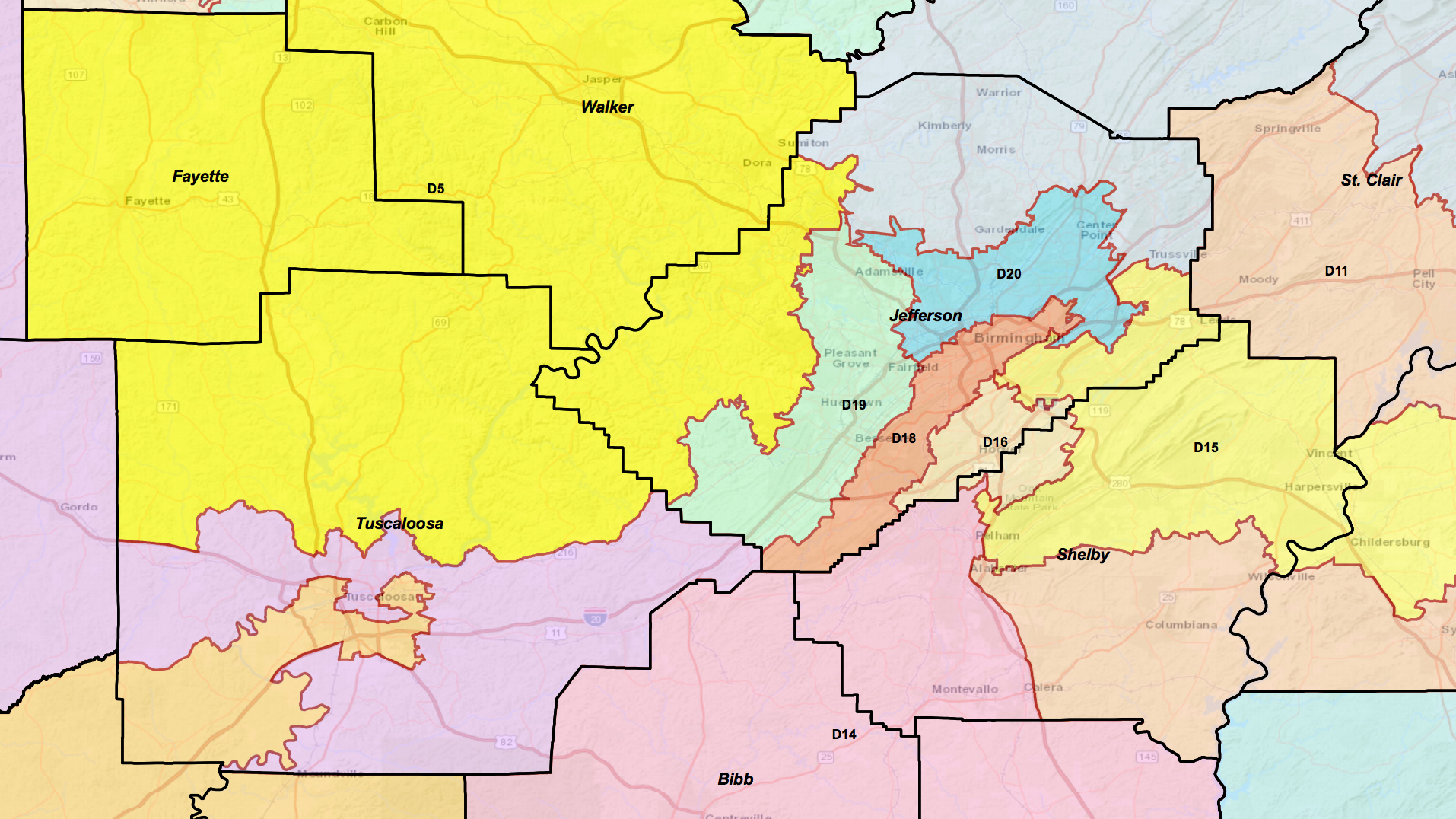By Josh Moon
Alabama Political Reporter
A three-judge federal court panel has tossed out lawsuits challenging Alabama’s new redistricting plan, effectively clearing the way for the plan to be used in the 2018 election cycle barring appeals.
The judges in Alabama’s Middle District determined that the challenges, which were brought by Alabama’s Legislative Black Caucus and the Alabama Democratic Conference, were untimely and lacked standing to challenge in the specific districts.
The court also noted that the plaintiffs failed to provide a legal standard by which it could be determined that the specific districts in question – House districts 14 and 16, and Senate District 5 – were either racially or partisan gerrymandered.
“I think this ruling pulls the rug out from under any challenge,” Sen. Jim McClendon said Thursday evening. “I’m happy to put this behind me, and I do believe this ruling does that. I think the way the ruling is worded – that they have no standing to challenge the map – would make it very, very unlikely that there’s an appeal.”
McClendon was part of a group of lawmakers who worked on the redistricting effort, beginning in 2012.
The challenge to the original maps made it all the way to the U.S. Supreme Court, which ruled in 2015 that Alabama’s voting maps were improperly drawn because they relied too heavily on race in some districts. Those districts, the Court said, had stacked and packed minority voters, and while it guaranteed a representative number of minority lawmakers, it lessened the impact of minority voters in other districts.
So, lawmakers went back to work, redrawing 25 Senate districts and 70 House districts. The Republican-dominated Legislature ultimately passed the current versions of the maps last spring, despite protest from Democrats.
“It was an interesting and educational process, but our ultimate goal was to draw a good map and to honor the wishes of the court,” McClendon said. “I believe we did that and that we have guaranteed that the voters in the state will be accurately represented.”
Thursday’s ruling also brings needed closure to politicians on both sides of the aisle ahead of the 2018 election cycle.
“This was very important in our efforts to draw district lines that guarantee every vote counts,” said Sen. Gerald Dial, who chaired the redistricting committee. “
But McClendon acknowledged that the ruling does little to provide guidance for future redistricting processes, which arise following each census. The fact that the court addressed only the plaintiffs’ lack of standing and failed to tackle more substantive issues, means that challenges will continue to arise.
“We still have no idea what percentage is considered adequate in a majority-minority district,” McClendon said. “What’s enough? What’s too much? There’s no guidance at all on that and we were just having to guess what the court’s would be OK with.”
Additionally, there’s still no practical way to handle the process, because politicians currently in office are being asked to create districts that could determine if they are re-elected.
“That’s one of the first things we do – protect incumbents – because how else are you going to get people to vote for your map?” McClendon said. “It’s just a very … interesting process. But I’ve never heard of a better way to do it.”















































